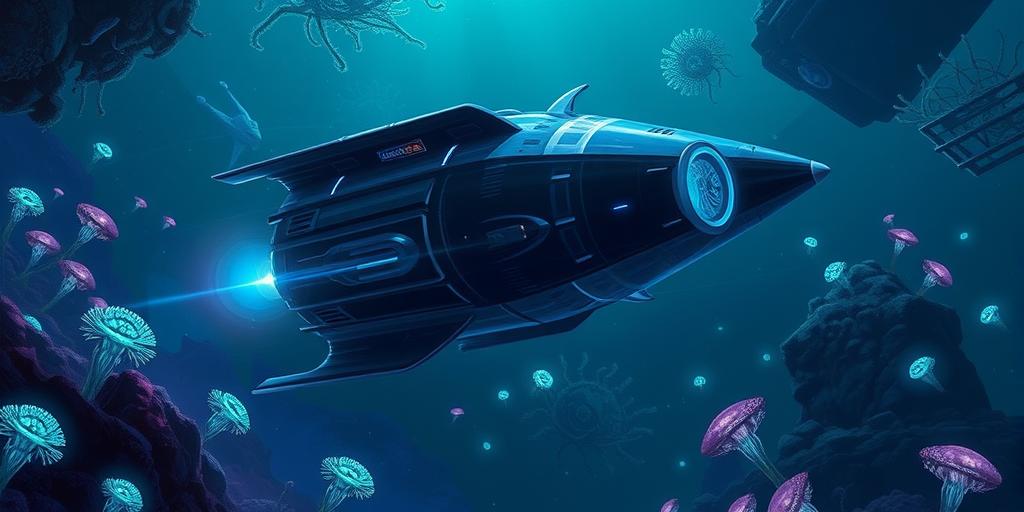Have you ever wondered about the mysteries hidden beneath the ocean’s surface? The crushing pressure, the impenetrable darkness, the bizarre and wonderful creatures that call it home… it’s a world largely unexplored, a realm of secrets waiting to be uncovered. But thanks to some incredible technological advancements, scientists are diving deeper and learning more than ever before, unlocking the secrets of the deep sea with the help of some truly amazing gadgets. Prepare to be amazed by the innovative tools that are revolutionizing ocean exploration!
Exploring the Abyss: Submersibles and ROVs
Deep-sea exploration requires specialized equipment capable of withstanding immense pressure and navigating the unforgiving environment. Submersibles, crewed underwater vehicles, are at the forefront of this exploration, carrying scientists to depths previously unreachable. These remarkable vessels are designed to resist extreme pressure, often employing spherical hulls made of thick, high-strength materials. But submersibles aren’t the only game in town. Remotely Operated Vehicles, or ROVs, offer another powerful way to explore the ocean’s depths. These unmanned robots can reach even greater depths than submersibles and perform tasks in hazardous environments, including deploying instruments, collecting samples, and conducting visual surveys.
Advanced Imaging Technologies
Imagine trying to see clearly in the inky blackness of the deep ocean, where sunlight barely penetrates. Sounds impossible, right? Well, thanks to cutting-edge imaging technologies, it isn’t. Advanced sonar systems and high-definition underwater cameras, equipped with powerful LED lights, are used to capture stunning imagery of the deep sea, revealing the extraordinary biodiversity that exists in these extreme habitats. These systems can create detailed maps of the seafloor, providing insights into geological formations, hydrothermal vents, and shipwrecks, offering an unprecedented level of detail to our understanding of underwater environments.
Sensing the Ocean: Advanced Sensors and Instruments
Beyond just seeing, scientists also need to measure and analyze the deep ocean’s physical and chemical properties. A suite of sophisticated sensors and instruments is employed for this purpose. These include devices that measure temperature, salinity, pressure, and currents, providing a comprehensive understanding of the ocean’s dynamics. Advanced sensors measure dissolved oxygen levels, nutrient concentrations, and the presence of pollutants, providing crucial data for understanding the health of the ocean ecosystem. Moreover, specialized instruments are used to collect samples of water, sediment, and biological specimens, providing invaluable resources for further analysis and study.
Studying Marine Life in Situ
Understanding marine life in their natural habitats is a key objective of deep-sea research. Scientists use non-invasive techniques such as remotely controlled underwater cameras and acoustic monitoring systems. These technologies allow them to observe marine animals without disturbing their natural behavior, leading to a better understanding of deep-sea animal behaviors and their interactions within the complex marine ecosystem. Researchers can collect environmental DNA (eDNA) from seawater samples, revealing the genetic fingerprints of deep-sea organisms, including those that are rarely sighted. This allows for a more comprehensive understanding of the biodiversity of the deep sea than ever before.
Data Collection and Analysis: Unlocking the Secrets
The data gathered from these advanced technologies requires sophisticated processing and analysis. Researchers use powerful computers and specialized software to process and interpret the huge amounts of data generated during deep-sea exploration. These processes involve developing complex models that can simulate ocean currents, predict the impacts of climate change, and analyze species distribution. Through sophisticated data visualization techniques, we can now see the ocean depths come to life, revealing patterns and insights that were previously hidden. Advanced data modeling methods make it possible for researchers to identify key trends and make accurate predictions that are crucial for conservation efforts and future deep-sea exploration.
Big Data and Oceanographic Research
The amount of data generated from deep-sea exploration is truly vast. The handling and analysis of this ‘big data’ requires advanced computational techniques and often involves the use of cloud computing. Machine learning algorithms are being employed to detect patterns in the data and identify anomalies, helping us understand complex processes such as ocean currents and climate change. This technological integration is not only enhancing research capabilities but is making the ocean’s secrets far more accessible for scientific study.
The exploration of the deep ocean is an ongoing journey, full of new discoveries and breakthroughs. As technology continues to advance, we can expect even more impressive innovations, allowing us to delve even deeper and unlock the remaining mysteries of our planet’s vast and unexplored underwater realm. By exploring the depths, we’re not only gaining a deeper understanding of the ocean, but also gaining insights into the very origins of life on earth and the future of our planet. So, what are you waiting for? Dive in and discover the amazing world that lies beneath the waves!




